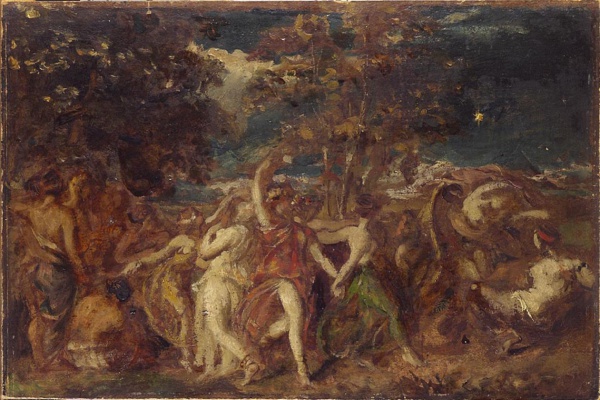Facts About The World Before the Flood
"The World Before the Flood" an enthralling oil painting by English artist William Etty, was first exhibited in 1828 and is currently housed in the Southampton City Art Gallery. The painting vividly brings to life a scene from John Milton's epic poem "Paradise Lost" depicting the world just before the Great Flood as envisioned by Adam. The artwork captures Milton's description of courtship, where men select wives from among a group of dancing women, with an ominous storm brewing in the background to signal impending doom.
When it was initially displayed, the public's reactions were polarized. Some hailed it as a masterpiece, while others deemed it crude and offensive. Born in 1787, Etty's early career was tumultuous, but he eventually gained recognition with his 1821 piece "The Arrival of Cleopatra in Cilicia." Etty became particularly noted for his nude paintings, which sparked both admiration and controversy due to the prevailing societal norms.
Drawing inspiration from Nicolas Poussin, "The World Before the Flood" captures a bacchanalian scene where men observe scantily clad women dancing. The painting emphasizes the ritual of courtship and the impending catastrophe, remaining faithful to Milton's narrative. It went through several title changes before finally settling on its current name.
Despite the initial controversy, some critics admired the painting for its artistry and execution. In 1828, the Marquess of Stafford acquired it, and in 1937, it found a permanent home at the Southampton City Art Gallery. Throughout his career, Etty faced ongoing criticism for his depictions of nudity but remained steadfast in his artistic vision until his death in 1849.
Today, "The World Before the Flood" and a preparatory study for the painting are displayed at the York Art Gallery. Both works were featured in a retrospective exhibition of Etty's art in 2011-2012. Although interest in Etty's work has fluctuated over the years, his legacy endures. His paintings continue to be celebrated for their artistic brilliance and historical significance.

 Ireland
Ireland